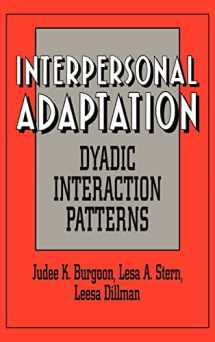
Interpersonal Adaptation: Dyadic Interaction Patterns
Book details
Summary
Description
When people communicate, they often adapt their interaction styles to one another. For example, they may match each other's behavior, synchronize the timing of behavior, or behave in dissimilar ways. This volume analyzes these dyadic interaction patterns and builds a case for a new theory of adaptation: Interaction Adaptation Theory (IAT), which draws the soundest principles from previous theories while being responsive to current empirical evidence. The book concludes with the offer of new research directions that would test the theory in order to bring the research full circle and connect interaction patterns with outcomes. This volume will serve as both a reference guide for researchers and a text for students and faculty in communication, psychology, family studies, counseling, and sociolinguistics.


We would LOVE it if you could help us and other readers by reviewing the book
Book review



